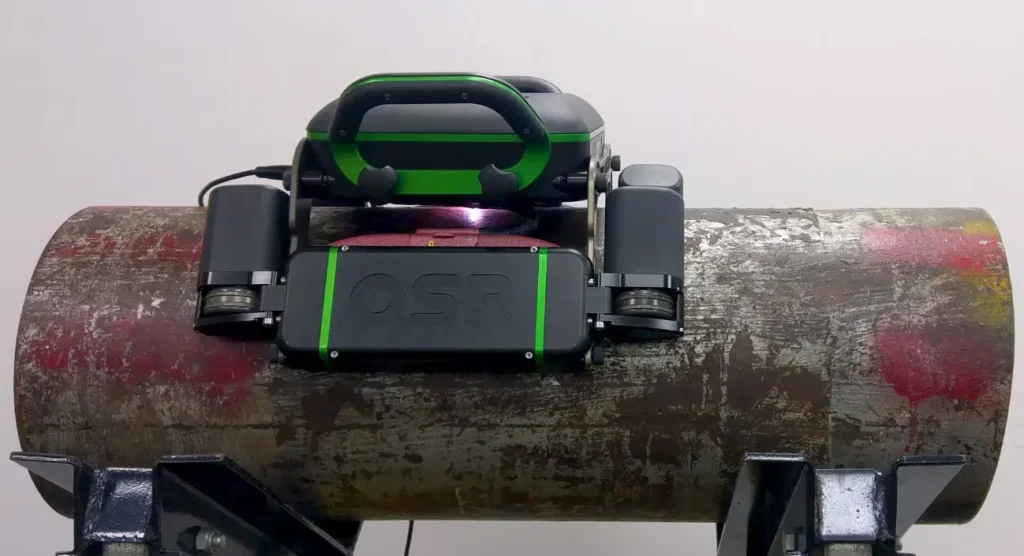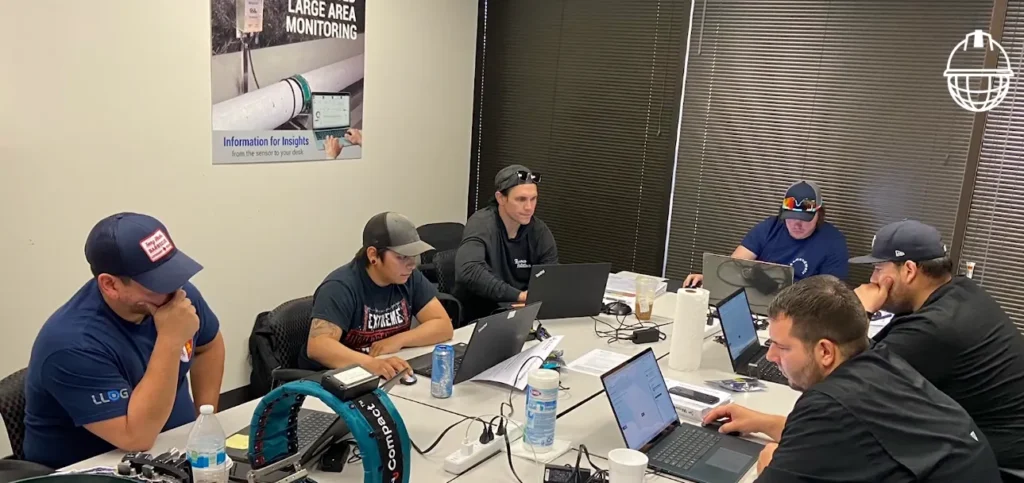Guided wave technology has been part of the non-destructive testing (NDT) toolbox for over two decades, however, Guided Ultrasonics Ltd. (GUL) is now elevating this technology to an entirely new level. Rhett O'Briant, Vice President of Technical Sales and Support for the Americas at GUL, explains how the company is transforming pipeline inspection into proactive, real-time integrity management.
Guided Wave Testing (GWT) is a type of ultrasonic non-destructive testing that uses low-frequency ultrasonic waves (30 kHz to 80 kHz) that propagate along the length of a structure rather than through it like traditional ultrasonic testing (UT), "guided" by its geometry. These waves can travel tens of meters with minimal attenuation (up to 100 meters under ideal conditions), making it possible to inspect inaccessible or buried areas without needing direct contact along the entire length.
The technique is widely applied in industries that involve long metallic structures, particularly where direct access is difficult, costly, or hazardous, such as:
Despite its versatility, guided wave inspection has some physical constraints, like any method, for instance, T-fittings and 45-degree elbows distort signals, limiting detection in and beyond those areas. Also, soil conditions and certain coatings, like polyurethane foam or thick bitumen can also dampen wave propagation.
To address these challenges, GUL actively tackle these limitations through innovation in hardware, software, and methodology.

Traditionally, GWT was used in scheduled intervals, technicians would go to the site, perform a screening, analyze the data, and report findings. But, instead of treating GWT as a one-time test, GUL has transformed it into a permanently installed, autonomous monitoring system that works 24/7, giving operators real-time awareness of pipeline conditions.
GUL uses specially designed dual-function guided wave sensors that are permanently attached to the pipeline, either aboveground or buried. Data collected is processed through advanced algorithms focused on detecting wall thickness changes over time, and then the results are uploaded to GUL’s Monitoring Studio, a web-based platform accessible to stakeholders anywhere in the world.
This system empowers asset owners to transition from reactive inspections to proactive maintenance, receiving real-time alerts on corrosion growth, enabling faster decision-making and preventive interventions.
Rhett O'Briant shared some cases where GUL's technology has already proven its value in critical applications:
The GUL's autonomous guided wave monitoring system was installed in a process gas flare line known to be prone to internal deposit accumulation, over 12 months. The original goal was to monitor for corrosion or wall loss over time, however, instead of wall loss, the data indicated buildup of solid material.
The operator was alerted to the change in real time and a cleaning was triggered before process disruption occurred, allowing the line to remain in service, avoiding a shutdown. The system was capable to detect non-corrosive buildup, not just wall thinning, giving operators early insight into flow-related issues.
The autonomous monitoring sensor was installed in a crude oil jetty line located beneath a service structure, where physical access was limited, to track both internal and external corrosion. After about 18 months, the system detected a significant change in wall condition approximately 12.5 feet from the sensor, indicating active corrosion.
A targeted physical inspection was conducted based on the alert, confirming coating degradation and active external corrosion at a girth weld. The area was repaired before a leak or spill occurred, and the company avoided a potential environmental incident and regulatory consequences. In this case is highlighted the value of early detection in high-risk environments.
GUL is investing heavily in refining its guided wave inspection systems, particularly for buried pipelines, one of the most technically demanding applications. Efforts are underway to enhance data quality, improve sensor resilience, and standardize field procedures to ensure consistency. Also, the company is expanding the capabilities of its Monitoring Studio, by integrating other types of sensor data into the platform, to provide a more holistic view of asset integrity.
The shift from periodic inspections to real-time monitoring is not just a technological evolution, it’s a change in mindset. Asset owners are now challenged to rethink pipeline integrity, moving toward systems that provide continuous insight rather than snapshots.
To support adoption, GUL offers a certified training scheme under the GULT program. Level 1 introduces participants to guided wave theory, equipment operation, and basic data interpretation, while Level 2 dives deeper into complex applications like buried pipe inspection and monitoring system commissioning.
Technicians are certified based on both coursework and field experience, ensuring that they not only understand the theory but can apply it in real-world conditions. This ensures a global network of qualified professionals who can fully exploit the capabilities of GUL’s systems.

Guided Ultrasonics Ltd. is reshaping the very role of guided wave technology in the industrial world, not by replacing it, but by expanding its purpose, reach, and intelligence. By pushing guided wave technology into the realm of automation, intelligence, and predictive maintenance, the company is helping operators worldwide move from reactive problem-solving to proactive asset control.
For more content, visit our Special Programs section, or our YouTube channel and LinkedIn profile.
Source: Inspenet.